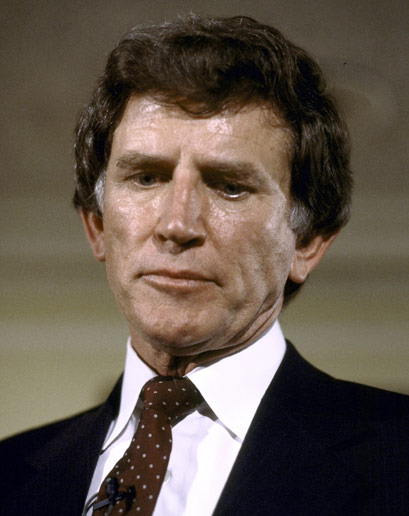In an excellent New York Times Magazine article that completely untangles for the first time the players and particulars of the Gary Hart political scandal of 1987, Matt Bai reminds us what was lost for good when a confluence of factors brought down the front-runner for the American Presidency. Hart was an astute observer of his time, aware long before his peers that stateless terrorism and the Information Age were twin challenges that would soon require aggressive management. But his mastery of the moment was laid to waste by indiscretion. The Colorado candidate wasn’t collared only by ego, stupidity and the media’s shifting rules of engagement–when the get became more important than what was gotten, when the political became truly personal–but seemingly by a streak of common jealousy. An excerpt about a key figure who escaped notice at the time:
Dana Weems wasn’t especially hard to find, it turned out. A clothing designer who did some costume work on movies in the early 1990s, she sold funky raincoats and gowns on a website called Raincoatsetc.com, based in Hollywood, Fla. When she answered the phone after a couple of rings, I told her I was writing about Gary Hart and the events of 1987.
“Oh, my God,” she said. There followed a long pause.
“Did you make that call to The Herald?” I asked her.
“Yeah,” Weems said with a sigh. “That was me.”
She then proceeded to tell me her story, in a way that probably revealed more about her motives than she realized. In 1987, Armandt sold some of Weems’s designs at her bikini boutique under a cabana on Turnberry Isle. Like Rice, Weems had worked as a model, though she told me Rice wasn’t nearly as successful as she was. Rice was an artificial beauty who was “O.K. for commercials, I guess.”
Weems recalled going aboard Monkey Business on the last weekend of March for the same impromptu party at which Hart and his pal Billy Broadhurst, a Louisiana lawyer and lobbyist, met up with Rice, but in her version of events, Hart was hitting on her, not on Rice, and he was soused and pathetic, and she wanted nothing to do with him, but still he followed her around the boat, hopelessly enthralled. . . .
But Donna — she had no standards, Weems told me. Weems figured Donna wanted to be the next Marilyn Monroe, sleeping her way into the inner sanctum of the White House, and that’s why she agreed to go on the cruise to Bimini. After that weekend, Donna wouldn’t shut up about Hart or give the pictures a rest. It all made Weems sick to her stomach, especially this idea of Hart’s getting away with it and becoming president. “What an idiot you are!” Weems said, as if talking to Hart through the years. “You’re gonna want to run the country? You moron!”
And so when Weems read Fiedler’s story in The Herald, she decided to call him, while Armandt stood by, listening to every word. “I didn’t realize it was going to turn into this whole firecracker thing,” she told me. It was Armandt’s idea, Weems said, to try to get cash by selling the photos, and that’s why she asked Fiedler if he might pay for them (though she couldn’t actually remember much about that part of the conversation). Weems said she hadn’t talked to either woman — Rice or Armandt — since shortly after the scandal. She lived alone and used a wheelchair because of multiple sclerosis. She was surprised her secret had lasted until now.
“I’m sorry to ruin his life,” she told me, offhandedly, near the end of our conversation. “I was young. I didn’t know it would be that way.”•

